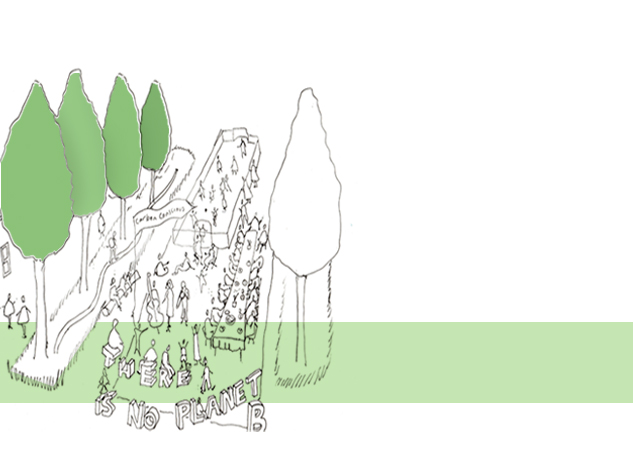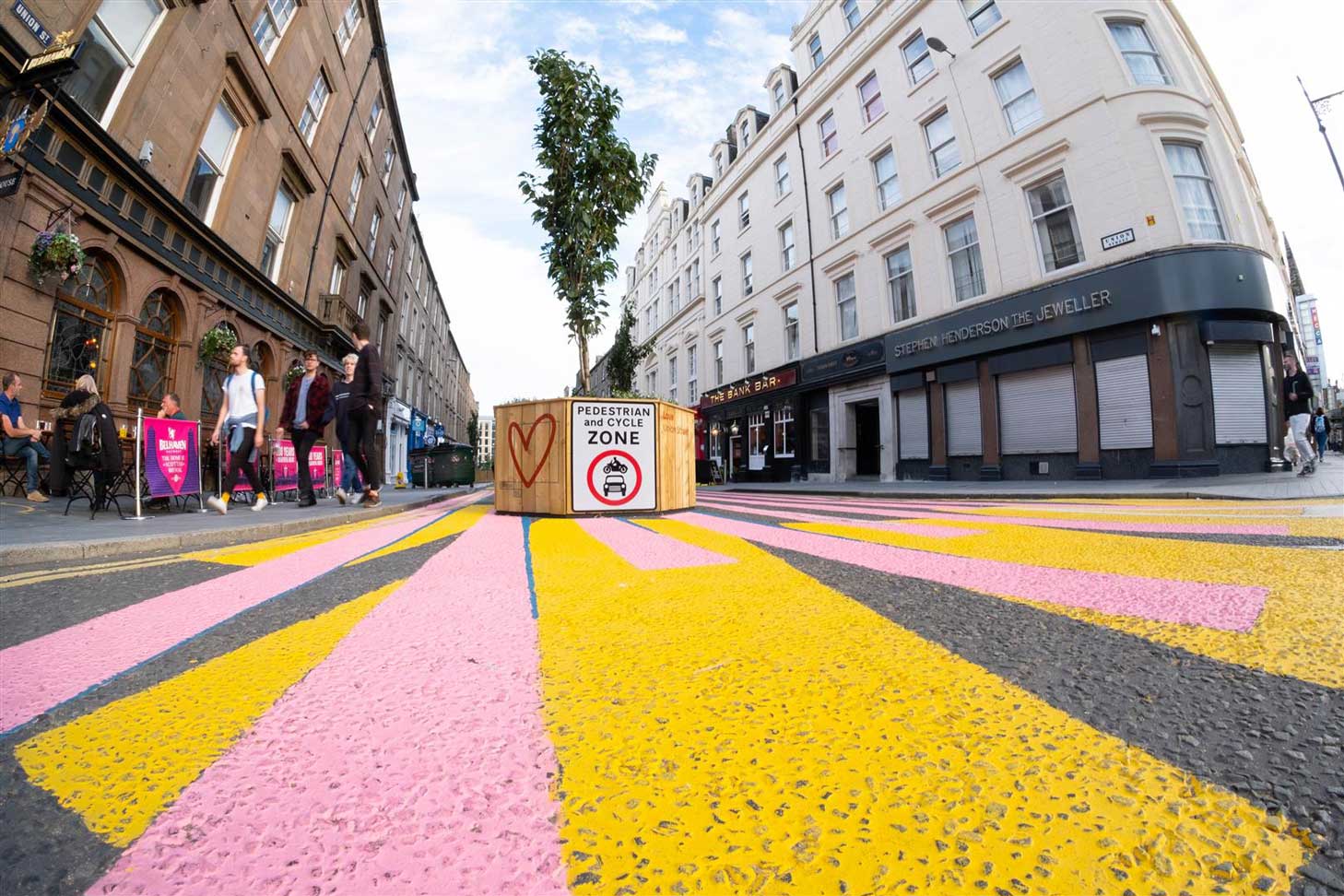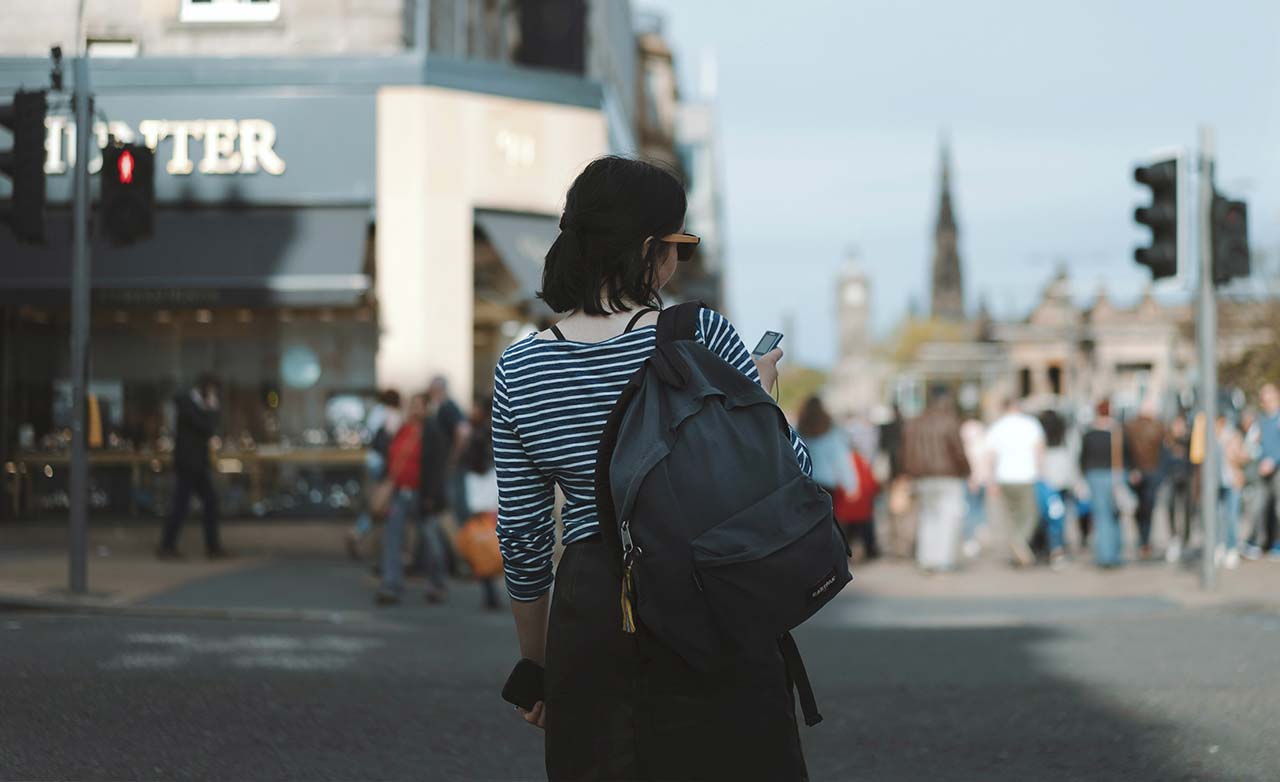How has the pandemic changed the way we look at our places?

As part of the roll out of our new Corporate Strategy we are publishing a series of blogs to expand on the main themes. In this blog Jim MacDonald, Chief Executive, Architecture and Design Scotland reflects on how our places have changed during a year of lockdown and adaptation.
One year on: how has the pandemic changed the way we look at our places?
I think it is fair to say, the Covid-19 pandemic has been the biggest shock to our systems in generations, and despite the vaccine and an easing of lockdown, it is set to have a lasting impact on our lives.
Nowhere is this impact felt more keenly than in the way we use our places and these have been transformed this past year. High streets and motorways empty, parks and open spaces full; trains, planes and automobiles silent, bird song audible in the centres of our biggest cities. But what have we learned and how is the experience changing the way we live?
Change is possible
Well, one thing we learned quickly is that we can change when we have to.
In the last year, and from a standing start, NHSNearMe has enabled 800,000 hospital appointments to be done online saving approximately 22 million miles of travel in Scotland! On the back of this enforced change, the NHS is now doing over 20,000 appointments this way each week, reducing carbon emissions (and tyre sales) everywhere.

Right across the country, I have heard about local businesses adapting to support local communities, from cargo bike deliveries for essential goods etc. to extended opening hours and repurposing spaces.
Future of the High Street
In Edinburgh, The Future of the High Street project is exploring how the high street can become a more successful and liveable place as we emerge from the Covid-19 pandemic.
This project is delivered by the Edinburgh Futures Institute and Edinburgh Living Lab in collaboration with the Data-Driven Innovation programme and New Practice architects. The work aims to develop a toolkit of six possible ideas to tackle common high street challenges through digital co-design workshops with local businesses and residents from Gorgie/Dalry and Dalkeith.
Two ideas will be selected to be rapidly prototyped, piloted and evaluated on-site. These ‘high street tweaks’ aim to create immediate benefits for local businesses and the high street as a place, whilst exploring the potential for longer-term adaptation, resilience or improvements.
This is just one example of how the disruption of the last year is providing the impetus to rethink how things are done, often with spectacular results.

Fragility of global systems
If the last year has highlighted the fragility of our global systems, the good news is that it has also shown us how quickly we can adapt. I am hugely encouraged by the extent of innovation that is on show and by the appetite for change that has not only survived the last 12 months, but grown.
The challenge now is to harness this energy to ensure our places offer a mix of experiences and opportunities to the communities they support, creating true ’20-minute neighbourhoods’ that work for everyone. Achieving this will mean working better together in places, which is exactly what we are here to help with. So, if you have ideas about a place that matters to you, get in touch, I would love to hear from you.
